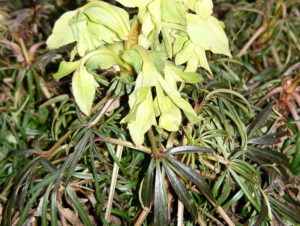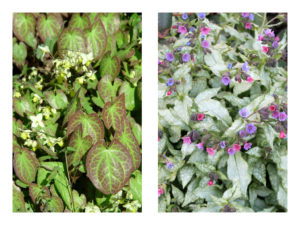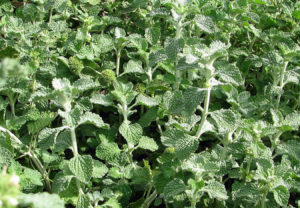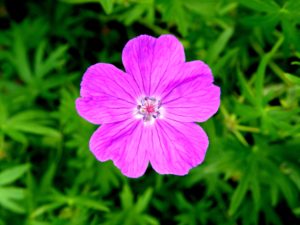The 10 Worst Plant Names
November 24th, 2020
Most plants have fairly pleasant names, such as love-in-a-mist, moonflower, glory-of-the-snow, and sweet william.
Then there are those with such disgusting or beastly names – bladder fumitory (a poppy-family annual) comes to mind – that you wonder why anyone would plant them.
Here’s my list of 10 of the worst-named plants…
1.) Stinking hellebore. Like so many bad-name plants, this semi-evergreen perennial flower really is a decent plant (so long as you don’t try to eat it… it’s poisonous).
It’s related to the Lenten rose and produces hanging, bell-shaped purplish flowers early each spring.
Weird thing is, it doesn’t blatantly stink. The name apparently came from what someone thought was an unpleasant smell when the leaves were crushed.
2.) Joe Pye weed, butterfly weed, etc. Any plant with weed in its name is at a big disadvantage on the garden-center benches.
Who wants to take a chance on something that sounds like kin to dandelion, kudzu, and poison ivy?
Too bad because “Joe Pye flower” is an excellent, long-blooming native perennial, butterfly “flower” is the must-have plant of the monarch butterfly, and sneezeweed (a.k.a. Helen’s flower) is a colorful late-blooming perennial (not a weed) that isn’t any more sneeze-inducing than most any other flower.
3.) Barrenwort, lungwort, etc. Similar to weed-named plants, anything with wort in the name needs a better marketing agent, too.
That’s because this word, in modern English, conjures up an annoying skin growth and not the Old-English meaning, which is a plant that dies back to the ground each year.
Again, too bad, because barrenwort is one of the best shady groundcovers, leadwort is an excellent blue-blooming groundcover, and lungwort is an attractive spring-blooming perennial with spotted leaves.
4.) Yucca. Yucca probably describes in some language what this white-blooming, blade-leafed desert plant looks like or does. But in English, you might as well call it the “Eee-yeeww plant.”
You don’t want to sit on it, but otherwise, there’s nothing yucky about yucca.
5.) Horehound. This one just flat-out has a terrible ring to it.
It’s something that sounds more like a rude insult than the licorice-scented herb that it is.
6.) Wandering jew. Maybe it’s not blatantly offensive, but this attractive trailing tropical vine with the purple, cream, and green leaves could stand an updated name.
Some people call it the “inch plant,” but that hasn’t taken off. How about “purple sunset vine?”
7.) Mother-in-law’s tongue. This one IS offensive, and it’s a nickname for what’s more commonly known as the snake plant, a tropical with long, pointy-tipped bladed leaves.
That sharp leaf shape was the inspiration behind the male (no doubt) who didn’t get along with his wife’s mother.
Snake plant isn’t marketing brilliance either, but it’s actually an improvement in this case.
8.) Bloody cranesbill
Here’s another trouble-free and very nice perennial that somehow picked up a name reminiscent of a marauding bird piercing its prey.
It’s actually a purple-blooming hardy geranium. Nothing bloody about it at all…
9.) Yarrow. OK, this is the best name for a plant (Achillea millefolium) that for some reason seems to have accumulated more nasty nicknames than any other.
Names that, thankfully, have mostly fallen out of favor for it include nosebleed, old man’s pepper, sneezewort, toothache weed, devil’s nettle, and, I kid you not, bad man’s plaything.
10.) Sideoats grama. What does it even mean? This seemingly random combination of words at least isn’t offensive or putrid, but it also gives you no clue that it’s the name of a native ornamental grass.











